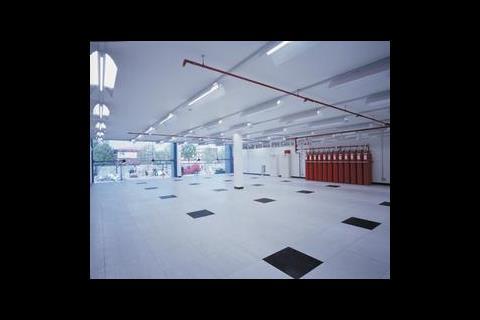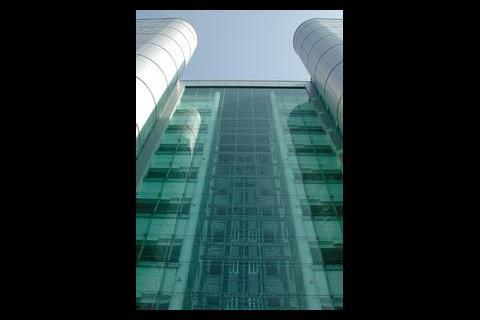The integrated fire protection solution should include good housekeeping, safe use and maintenance of equipment and staff training as well as measures relating to configurations of the hazards and the building itself. Passive measures alone cannot prevent the outbreak of fire and it becomes necessary to address how a fire event may be successfully detected and addressed. As part of the overall solution fire protection systems can play a vital role, these comprising integrated detection, alarm, control and active fire extinguishing elements working together to achieve the required level of protection.
In many applications, fire detection alone is inappropriate since intervention by personnel, possibly using portable extinguishers, may be slow and is dependent on the facility being manned. Fire containment by passive means may be possible but even if confined to one enclosure, combustion is likely to cause direct fire and secondary heat and smoke damage of significant impact. Active automatic fire extinguishment often represents the preferred solution and we commonly consider sprinklers in this respect.
For computer suites, electronic data processing facilities and other high value assets, the relative slowness of response of sprinklers to fire and the potential for secondary damage caused by the water itself leads to consideration of a more appropriate option for rapid fire extinguishment.
Many will be familiar with halon systems which became prevalent from the 1960s. Their success became firmly established but the agents themselves have an ozone depletion potential (odp) and became subject to the Montreal Protocol, resulting in a ban on production from 1994. The recent European regulation EC 2037/2000 now requires all non-essential halon systems to be removed from service throughout the EU by the end of this year.
Environmental agents
Since the mid 1990s, a number of new generation gaseous total flooding systems have emerged using zero odp agents. There are two designations of agents: chemical gases and inert gases. While they have a range of attributes, all are environmentally-acceptable, are clean gases at ambient temperatures and offer efficient fire extinction performance at concentrations below defined human toxicity levels. Also, they are recognised in current fixed systems standards and are available in third party-approved systems.
So what are the benefits to the end user of these systems?
Now approaching a decade of active service in many countries across the world, the new generation fixed gaseous systems use in valuable asset environments includes not just the more obvious applications in computer suites and other electrical facilities but also in situations as diverse as flight simulators, hazardous stores, turbine enclosures, cultural heritage sites, archives and marine vessels.
Making an example
There are a many projects which illustrate where fixed gas systems have been installed. In the mid 1990s, an American communications organisation built 70 new sites to house telephone, high speed data and video service equipment. Investing £60 m in 'hardened' facilities and with each location having £5-7 m of hardware, clean gas systems with high sensitivity smoke detection were selected to not only protect high value equipment but, even more importantly, maintain continuity of service and on-going revenue. Most of the extinguishing systems were installed in the ceiling areas, allowing maximum use of room space for communications hardware.
The Alexandria Library in Egypt contains priceless artefacts of ancient civilisations and a number of fixed systems protect the ancient manuscript and book storage rooms as well as several electrical risk areas. Designs met the challenge of large room protection while maintaining the aesthetic qualities of the building. Using space-effective systems, rapid fire protection is provided for irreplaceable collections, limiting collateral fire damage and with no secondary damage resulting from the extinguishing medium.
A fire at Dusseldorf Airport in 1996 led to 17 deaths and the loss of some £175 million of equipment. A radical reassessment of fire protection methodology ensued, including that of the control tower where technical failure can cause massive delays and endanger airborne traffic. Gas systems were selected for critical areas within the tower, which is constantly manned. Several structural modifications to the building were made during the installation phase as well as a number of changes to system locations and pipe networks.
Success of systems in combating hydrocarbon fires in machinery is demonstrated by two cases reported in the USA and Mexico. In both incidents, turbine generators suffered rupture of the turbine wall and led to high intensity fires. Gas systems achieved extinguishment so rapidly that the turbines and associated electrics were virtually undamaged by fire and downtime was limited to structural repairs to the turbine. In another example, a power cut affecting an unmanned remote cellular station caused a generator to engage. The hydraulic hose became uncoupled however, and the fluid ignited in contact with the exhaust manifold. Discharge of agent suppressed the fire, limiting damage to the generator set.
Fire protection encompasses many facets in its planning, implementation and on-going procedures. The role of fixed gaseous systems is vital in offering effective, clean, safe and economical solutions to meet the ever-growing demands for active fire extinguishment in high value asset environments. Whichever fixed system is selected, they must form part of an appropriate fire protection package which itself contributes to the overall fire protection strategy for each location.
The examples given earlier are just a few from many. Further advice is available from several sources, although perhaps the most useful starting point for the building services professional is Fire extinguishing systems, a guide to their integration with other building services, available from BSRIA and produced in association with the British Fire Protection Systems Association.
Source
Building Sustainable Design
Postscript
Dr Dave Smith is business development manager of Kidde Products writing on behalf of the British Fire Protection Systems Association.























No comments yet